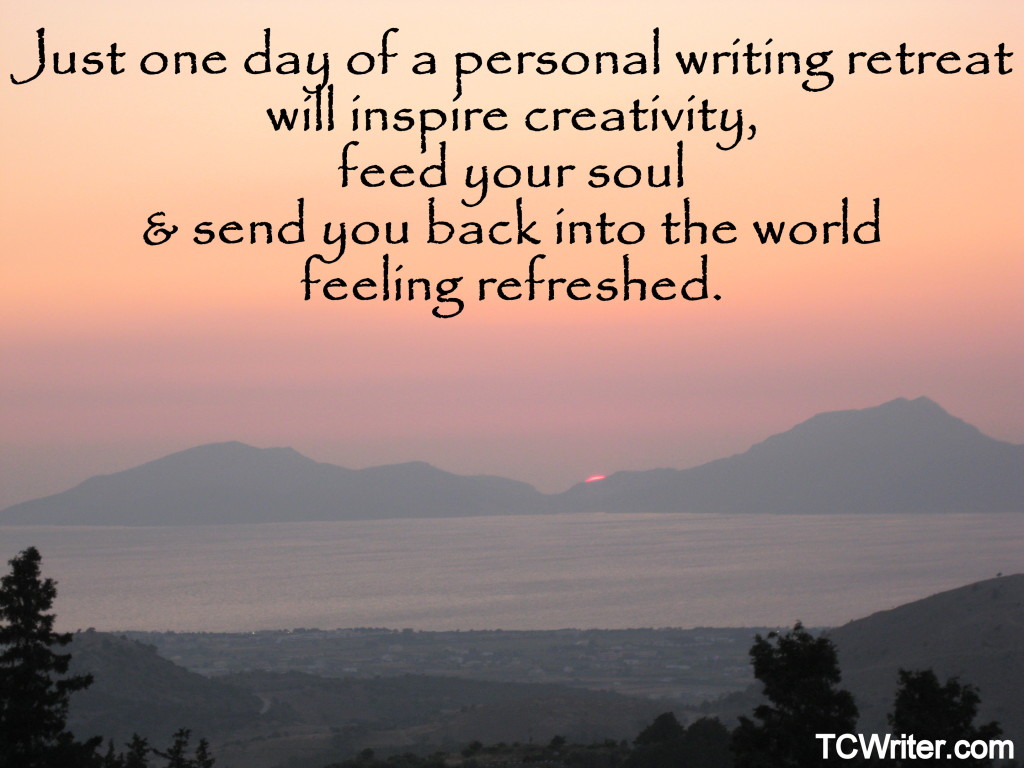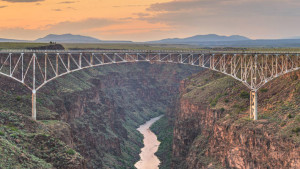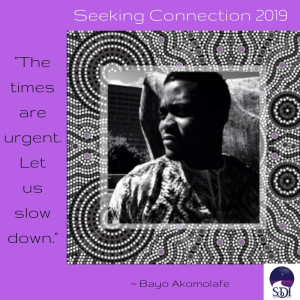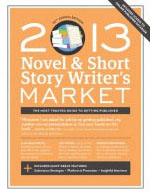As a writer and writing coach, I have always been a big fan of writing retreats. We all need retreat time to turn within, connect to the muse, recharge our batteries and take our creative work or journaling deeper.

It’s great if you can go away to a formal writing retreat where everything is organized for you and you have a writing teacher leading you. I teach retreats like those, usually in places of great natural beauty, and it’s a joy to see how participants can truly let go and relax into their writing when they are away from the duties and demands of home.
But sometimes it’s just not practical to go away. As a working writer, I’ve found ways to create mini home retreats so I don’t have to take a big trip away. Home retreats are easy to slip in to a weekend or other short period of time so you have access to this wonderful creative nourishment anytime!
Here’s how to set up a writing retreat for yourself. A day is a good way to start if you haven’t done one before.
CREATE THE SPACE
First, we need to set a boundary around our retreat time. Whether it’s a day, a weekend, or longer, the whole point is to retreat. That means stepping back from our interactions with the world and our availability to others. Tell friends that you won’t be socializing or answering phone messages and texts. If you are a parent, ask your partner or family to take the kids away for the day. They can have their own fun trip or sleepover while you are holing up at home – that way it’s a treat for everyone.
PREPARE FOR YOUR RETREAT
Obviously you will buy any writing supplies in advance, but also think about what else will support you. Would you like some incense to create a retreat atmosphere? A beautiful bouquet of flowers in your writing area? Perhaps you’ll splurge on some fancy ice cream or special chocolate.
Definitely shop for food in advance. I always think it’s important to have food that is delicious and nutritious and something I enjoy, so my retreat becomes self-nurturing on many levels. Plan what you are going to eat but keep it simple so you don’t spend all day cooking and cleaning up. Maybe you’ll make a pot of soup in advance or have the slow cooker filled with ingredients and ready to rock on the day of your retreat. Either way, enjoy feeding yourself with healthy food and also make sure there are a few treats thrown in!
THINK ABOUT YOUR SCHEDULE
It’s unrealistic to think that if you are going to do a writing retreat, that you will actually write all day and do nothing else but write all day. It’s too much. Of course, there are those rare occasions when the creative impulse is so strong that actually you might find yourself writing for a straight 9 hours, looking up at the end with a dazed expression and realizing that you just skipped several of your superbly planned meals! But most often we need to spend chunks of time doing different things around the writing.
It’s nice to have a balance. Maybe get up, write for an hour in the morning when you are still in that glorious space between dream time and the so-called real world. Then eat, write, schedule time for a walk, watch the birds, take the dog out or do your yoga, your exercise, your meditation, or play some loud music and dance, then another writing session, and so on. So often, creativity strikes when we are doing something other than writing, some activity where we connect with nature or move our bodies, and it’s great to mix it up. But make sure these activities are quiet and contemplative activities, or exercise and movement. Don’t fall prey to the lure of technology, which leads me to my next point…
UNPLUG FROM THE WORLD
Seriously, turn off the phone, unplug the internet, unplug everything. You can’t retreat if you are tweeting, texting, talking or playing video games. These do not replenish us nor allow us to fall into the sweet spaciousness that a retreat provides.
As a writing coach, I’ve seen in the last few years how much harder it is for writers to turn off their technology and communications and settle into their creative exploration. This is one of the reasons that writers need retreats now more than ever. The 24/7 communications lead to distraction and a pressure to keep multitasking. Studies have shown that multitasking decreases attention span, empathy and emotional IQ…. all things we need to be a creative person.
So for your one day or one weekend or however long you plan your writing retreat, allow yourself to unplug, turn away from the demand to be doing five things at once, and just allow yourself to be you, now, in this present moment, writing your heart on the page.
It might feel strange at times if you are used to a full-speed-ahead life. But the stranger it feels, the better you are doing in creating this sacred space for yourself!
CREATE A RITUAL
When we go away to a retreat, the event automatically feels special because we are in different surroundings, we are being catered for, we are being led, everything is different to the way it is at home.
When we take a home retreat, it helps to have some rituals that also create an atmosphere to lift us out of our ordinary life. This can be as simple as lighting a scented candle or a type of incense that we only light when while on a writing retreat. The aroma creates a sacred space and reminds us… oh, now I’m doing this, not my regular life. Or play a piece of music to signal the start of your retreat, or sip a special delicious tea or take a bath with essential oils… any sensory experience that marks a boundary as you exit the everyday world and enter your inner creative time.
You can also take a walk around the block at the beginning of the retreat and then as you re-enter the house and close the front door behind you, you say out loud, “Now I’m on retreat!” Or as you walk into the writing area you are using for your retreat, deliberately choose to leave behind your ordinary world and responsibilities (they will still be there later!) and again state: “This is my writing retreat.”
SHARE A RETREAT WITH FRIENDS
It’s also lovely to create a writing retreat with a partner or friends and I often do this. Everything is the same as a solo retreat, but we all agree to keep silence during the day and do our own thing, perhaps with a shared meditation or yoga session or a group silent walk if that feels right. Then in the evening we meet up over dinner and share our writing, share our process and how the day has gone for us. This is a really sweet way of doing a retreat with the support of a group.
You might be surprised at how just a day or weekend of writing retreat can refill the well of your creativity and also replenish you on a personal level. So if you are at all tempted to take a writing retreat, I encourage you to do so. Start with just one day… and enjoy!
Tania Casselle is a writer for magazines, book publishers, and online media. She also coaches writers and leadsonline writing seminars including the successful Write to the Finish online course by phone and email for writers working on a book. She leads in-person writing workshops and retreats in beautiful places, usually teaching with her husband, the Hemingway award-winning author Sean Murphy. See more WriterMuscle posts or sign up to receive future Writer Muscle updates – down-to-earth advice from a seasoned writer.








 “The Times are Urgent. Let Us Slow Down.”
“The Times are Urgent. Let Us Slow Down.”


